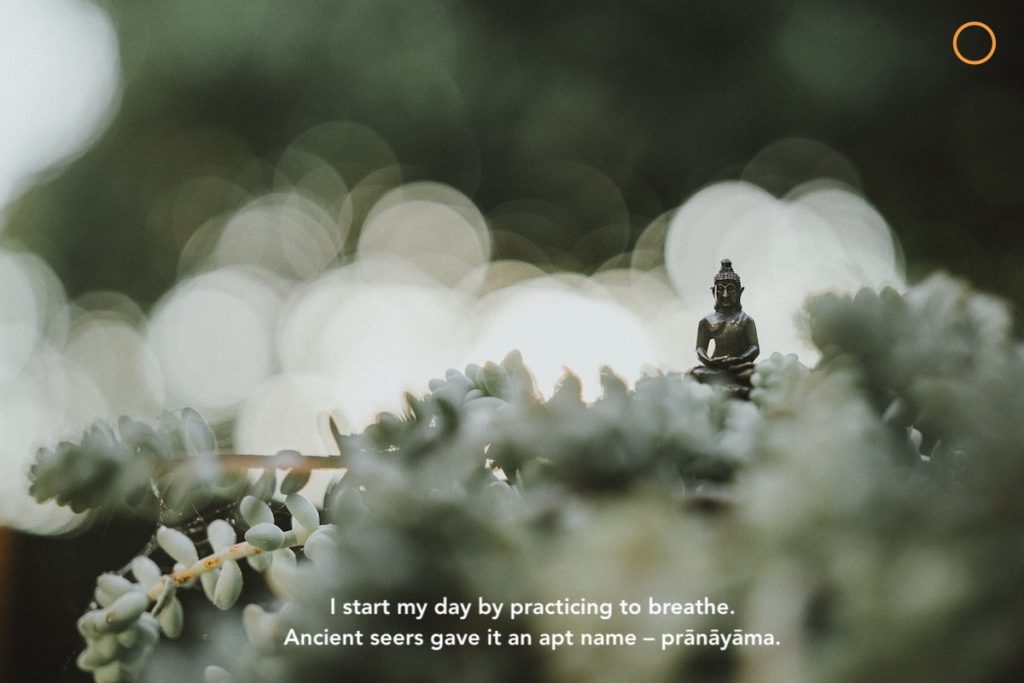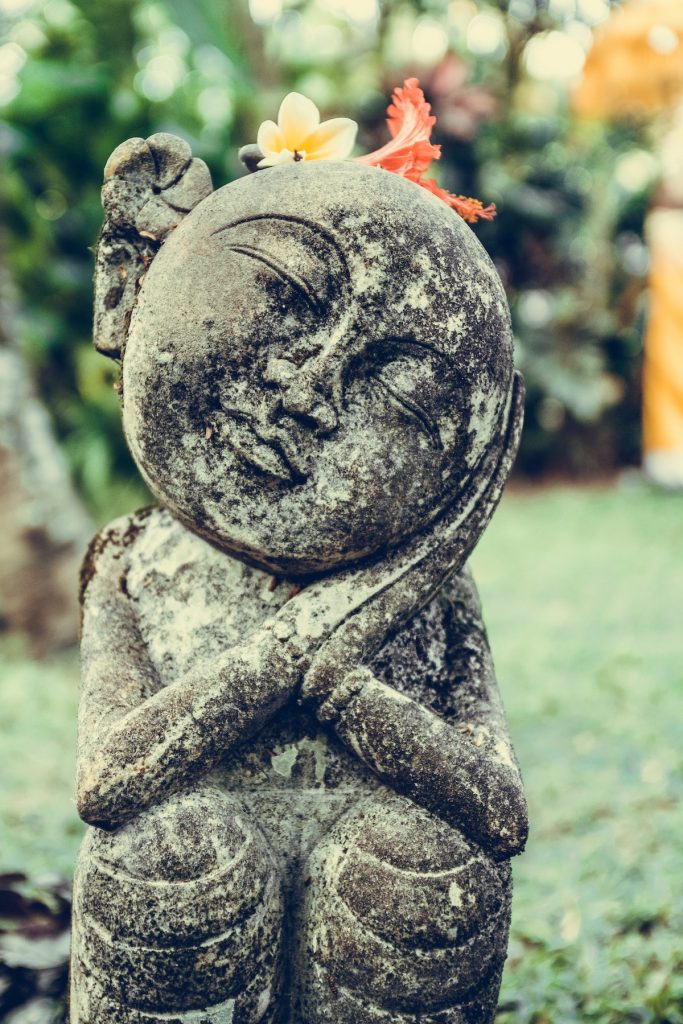
Breathing is such an underrated process, isn’t it?
I start my day by practicing to breathe. Ancient seers gave it an apt name – prānāyāma.
What is prānāyāma? Some call it the science of breathing. Others give it more definition by classifying categories of breathing – Ujjayi, bhastrika, anulom-vilom, nadi shodhana prānāyāma. The Bhagavad Gita describes prānāyāma as:
अपाने जुह्वति प्राणं प्राणेऽपानं तथापरे ।
प्राणापानगती रुद्ध्वा प्राणायामपरायणाः ।
And there are even others who are inclined to the process of breath restraint to remain in trance, and they practice stopping the movement of the outgoing breath into the incoming, and incoming breath into the outgoing, and thus at last remain in trance, stopping all breathing.
In Yoga, breathing comprises three main steps – inhalation, or pūraka, rechaka, or exhalation, and kumbhaka, or retention. The verse above describes the extension of the ‘retention phase’ of breathing, thus enabling a certain trance-like state, that is conducive to enlightenment.
Prānā is often mistaken to be breath – well it isn’t. There is no word in the English language, nor in Western sciences, that can describe prānā. The consensus is that it can be described as some sort of life-force, that circulates in our subtle body (in yoga, it is Prānā-māyā-koshā). Prānāyāma can thus be thought of as āyāma of Prānā, where āyāma means expansion (and in some definitions, contraction as well).
Well, that is the theory, in short. You must think – what’s in it for me?
A lot. Not just a lot, but your whole life is governed by how you breathe. A process that we take for granted, and don’t pay much attention to – holds the keys to a good and healthy life. Shallow breathing is associated with nervousness, fright, anger and negativity. Deep breaths – just the opposite. I don’t think that it is possible for one to be angry, when breathing deeply.
Just try it for yourself.

The next time that you feel a negative emotion – be in fright, or anger, or anxiety – close your eyes, and take in a deep breath. By deep breath, I mean breathing in slowly, through your nostrils, feeling the air fill your lungs, your stomach pushing out gently as your diaphragm expands, and so does your rib-cage so as to accommodate your lungs at full capacity. Ideally, count to 8 (tick-tick 1, tick-tick 2..) at a minimum in your head, to get a full inhalation.
Hold for a quick moment, and exhale – as slowly as you inhaled. through your nostrils, air flowing out gently, emptying the lungs, till all the air that you inhaled, is released.
Repeat for at least 2 minutes. At the end, join your hands together in Anjali Mudra (namaste), and feel thankful for all the blessings in your life. Genuinely thankful. Open your eyes.
My experience is that these 2 minutes can alleviate the most negative situations.
Even if you don’t feel excessively negative, this short exercise helps you feel more relaxed – something that you can repeat as often as you can during the day.
All it takes is two minutes of your precious social media time:)
Apple Watch even has an app for it (called Breathe), for those who may forget to do this regularly. The app by default reminds users every five hours to take a moment to relax and take deep measured breaths. … It can also be set for 4 breaths per minute, up to 10 breaths per session.
So I start my workday today – by resolving to consciously practice this breathing exercise at least once an hour. Do try it too, and tell me how you feel!
Also, here is some music for today – something that you can play in the background when you work – subtle relaxation, and helps you breathe more slowly as well:)

Pingback: 21-day Sādhanā challenge – Day 5 – Shihan Rohit Ghai